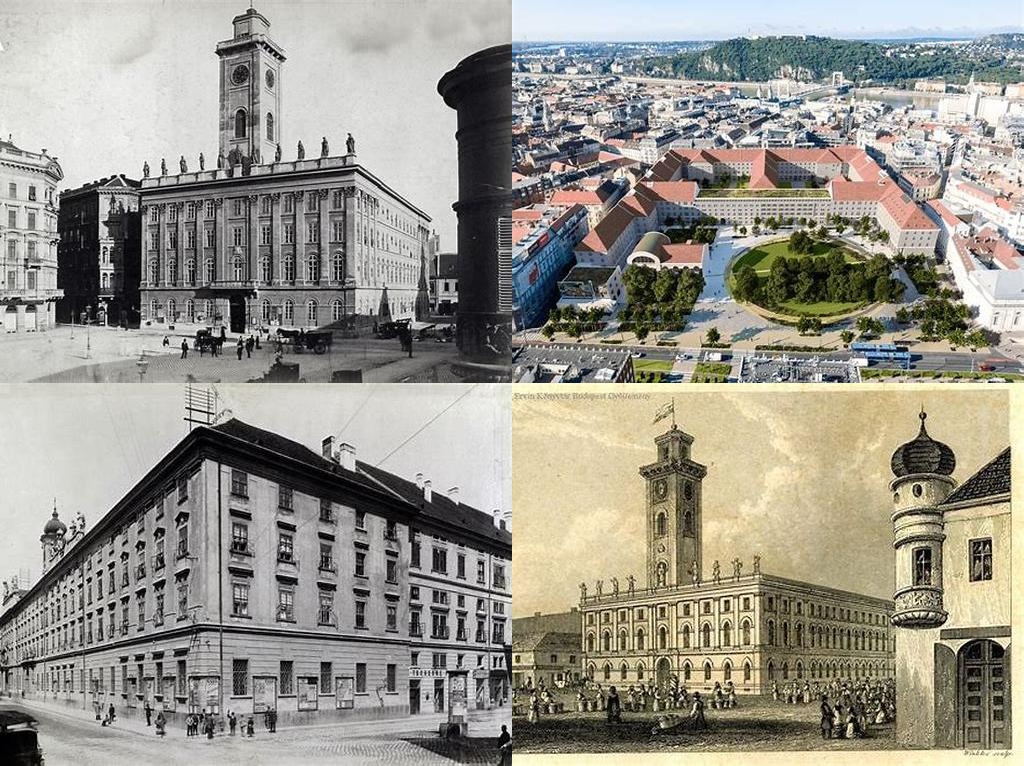
Pesti Új Városháza is a place that has a curious way of living two lives at once—one as the stately seat of government for Budapest, another as a time capsule filled with unexpected stories at the edge of bustling downtown Károly körút. Completed in 1870, the “New City Hall” isn’t fooling anyone into thinking it’s new, but that’s part of its charm. Its beautiful pale faҫade and grand archways draw your eyes away from the busy traffic, hinting at the quieter ambitions of the late 19th century. Budapest was a city on the rise, racing toward unification and modernization, and the grand design by József Hild (and later Imre Steindl, who also gave us the Parliament) seemed a necessary badge of sophistication.
Walk under the portico and you’re struck by how different the world inside feels from the outside roar: intricate iron grills guard the inner court, where sunlight washes over a peaceful colonnade. The core of Pesti Új Városháza is a triangular courtyard, and if you find yourself there on a quiet afternoon, you may catch the feeling of a place gently holding onto secrets. This spot has counted revolutionaries, poets, fantasy and bureaucracy together under its roof (the poet Sándor Petőfi even spent some time in the building—though perhaps not by choice, as the original city hall also housed the city jail for a while). Slip past the massive wooden doors, and with a bit of politeness to the staff, you can peek into the entry halls lined with marble stairs and art-nouveau styling—reminders that this place was meant to project dignity and self-respect for a rapidly growing city.
Pesti Új Városháza took an oddly long detour on its way to fulfilling its destiny. Initially designed to replace the cramped medieval city hall in the Belváros (inner city), it never quite took that role. As fate (or political infighting) would have it, the offices of the chief mayor remained elsewhere for years. Instead, the building was rented out to a jumble of tenants: the police department, county court, and, during rougher times, even served as a hospital. You can still see traces of these changing fortunes in the patchwork of spaces and corridors—architecture in dialogue with the shifting priorities of a city finding itself.
The real surprise is how Pesti Új Városháza has continued to adapt to the rhythms of modern life. On weekdays, the building buzzes with civil servants, archives, occasional guided tours, and, if you’re lucky, the odd festival or concert in its arcaded courtyard. Local residents slip through to cut across the block; some pause for a quick lunch on a bench beneath the limes during spring. It’s a deeply public place in the old European sense: not just a monument, but the backdrop to small, everyday dramas. For the curious traveler, the city hall offers one of the best places in Budapest to tuck yourself into the city’s fabric; just watch how the sunlight changes across the courtyard tiles, or see how the shadow of the steeple spills across stone at dusk.
If you love places where city history and daily life overlap, Pesti Új Városháza delivers. Its quirky story is a reminder that not all grand buildings become what they set out to be, but sometimes evolve into something even more interesting. It’s free to enter, and you’re welcome to wander the courtyard, admire the columns, and—if feeling particularly bold—ask about current exhibits or events. In doing so, you may experience what locals know: that the city’s heart doesn’t always beat in museums or cathedrals, but in the places where history quietly melds with routine.





